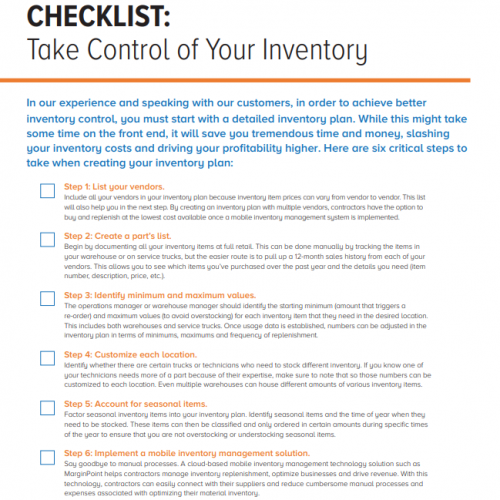The foundation of any successful operation lies in the fundamental planning stages of inventory control. Without a clear and actionable plan from the onset, managing inventory becomes little more than a guessing game. Good planning evaluates the people, processes and products at every stage of operation to create conditions that make inventory control feasible.
Poor inventory planning often results in frequent back ordering, increased return rates, increased customer dissatisfaction, increased downtime and the likelihood of inventory excesses and shortages. All of which ultimately lead to decreased monthly customer spend which hits companies square in the pocketbook.
Both small companies and large enterprises can benefit from creating a detailed inventory plan. Here are some of the benefits you can expect:
- Increased technician productivity: Having the right parts on hand allows technicians to finish the job the first time, without wasting time chasing material.
- Decreased shrinkage: With a clear process for inventory control, you’ll experience fewer missing or lost parts and tools. Technicians and employees will take ownership of materials when they are assigned responsibility.
- Improved material tracking: Your inventory plan will help you better understand usage and demand in real-time. This data will allow you the flexibility to make changes to stock levels, purchases and work orders.
- Increased cash flow: Working capital is the best source of surplus cash to generate profits at the lowest risk. With less cash being absorbed by unnecessary inventory, it can be reinvested or withdrawn from the business as needed.
Your inventory plan should be documented, easy to understand and easily communicated to all team members involved. Not only should the plan include terms for inventory management, but also describe how the plan will be executed. Reducing uncertainty and miscommunication allows you to establish KPIs and metrics that enable accurate predictions for future usage.
Creating and maintaining an inventory control plan requires clearly defined processes. The valuable data you collect from these processes will help you make smart and agile decisions about your business and your customers’ needs.
For step-by-step guidance on how to create a detailed inventory plan for your business, please download our six-step inventory checklist.
